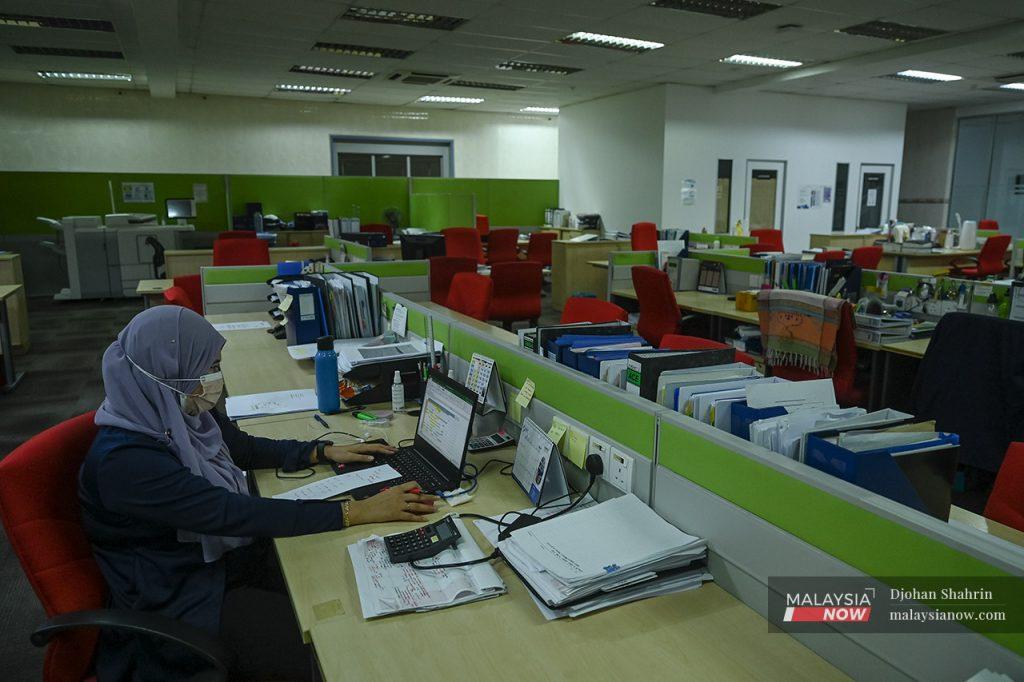Four-day work weeks, practical or not?
Questions arise over cost, productivity and the payment of wages if the conventional work week is trimmed by a day.
Just In
Just under 100 years ago, Henry Ford, the founder of America’s Ford Motor Company, introduced the 40-hour work week model by closing his factories on Saturdays and Sundays instead of running seven days a week as it previously did.
He gave his workers two days off after finding only a marginal increase in their productivity level if they continued working the full week.
The two-day break later became standard practice throughout the US, turning into what is known today as the weekend.
Now, working five days a week for 40 hours is considered the standard for companies in both the government and private sectors.
But the idea of a three-day weekend has also been gaining currency, proponents of which say that a four-day work week will provide a better work-life balance.
Support for a four-day work week increased with the arrival of the Covid-19 pandemic in late 2019 and early 2020, when millions of workers were forced to work from home.
Earlier this week, the UK embarked on a pilot project for a four-day work week for a period of six months.
About 40 British firms are participating in the project which will see workers paid the same as they would be for working five days a week.
The project is being run by UK think tank Autonomy, non-profit advocacy groups 4 Day Week Global, the 4 Day Week UK Campaign and researchers at the universities of Cambridge and Oxford as well as Boston College.
But how well such a project would work in Malaysia is the subject of debate.
The Malaysian Employers Federation (MEF) said a four-day work week would lead to an increase in costs.
Speaking to MalaysiaNow, MEF president Syed Hussain Syed Husman said many employers are still struggling to recover from the losses incurred due to the Covid-19 pandemic and the recent massive floods.
“But if the existing work hours are compressed to fit into four days, there would be no corresponding increase in operation costs,” he said.
“Employers could explore the possibility of a four-day work week in this manner.”
Syed Hussain said an increase in costs would make businesses lose their competitive edge and result in the loss of clients and market shares.
He added that the differences in work culture from country to country should also be taken into consideration.
Several European countries have tried implementing a four-day work week system but success has been limited.
In order to ensure that this model would work at a global leve, Syed Hussain said every country must be of the same mindset.
“Asia is in a different time zone from the US,” he said. “Keeping in touch is still very difficult. Zoom has helped to some extent but it has its limitations.”
Nevertheless, four-day work weeks have been implemented in office-based creative industries such as public relations.
In sectors like retail and aviation, though, employee performance is measured by the physical services provided to customers.
“Employers are unlikely to be able to pay them full wages,” Syed Hussain said.
“In manufacturing industries where employees produce an actual product that takes a specific amount of time to make, reducing things to a four-day work week would mean that they are not meeting the full quota for production.”
Aside from the factors of cost and productivity, questions also arise over the hours of work and the quality of government service should such a system be used.
The Congress of Unions of Employees in the Public and Civil Services (Cuepacs) said while the pilot project in the UK was nothing new in and of itself, it was an effort that merited appreciation and which could be made a model if it was proven effective.
“Questions about shorter work hours and the effect of this on the productivity of workers is not something new,” Cuepacs president Adnan Mat told MalaysiaNow.
“The theory of quality versus quantity becomes the subject of debate. Some studies say that workers who work for eight hours are only truly productive for about three.”
Syed Hussain meanwhile said that productivity was difficult to gauge.
“It used to be measured by the quantity of workers’ output. In this digital age, productivity can be equated to the quality of output.”
At the end of the day, Adnan said, Cuepacs belives that Malaysia’s existing system is still effective, especially with the introduction of the work-from-home or WFH model and flexible hours for civil servants.
He said there was no point to shorter work hours if employees would be forced to work more in order to earn more to meet the rising cost of living.
“This would achieve neither the intentions nor the objectives of implementing a shorter work system,” he said.
“Right now, the average worker is still in the B40 group and earns wages below the national poverty line.”
Subscribe to our newsletter
To be updated with all the latest news and analyses daily.
Related Articles
Most Read
No articles found.
